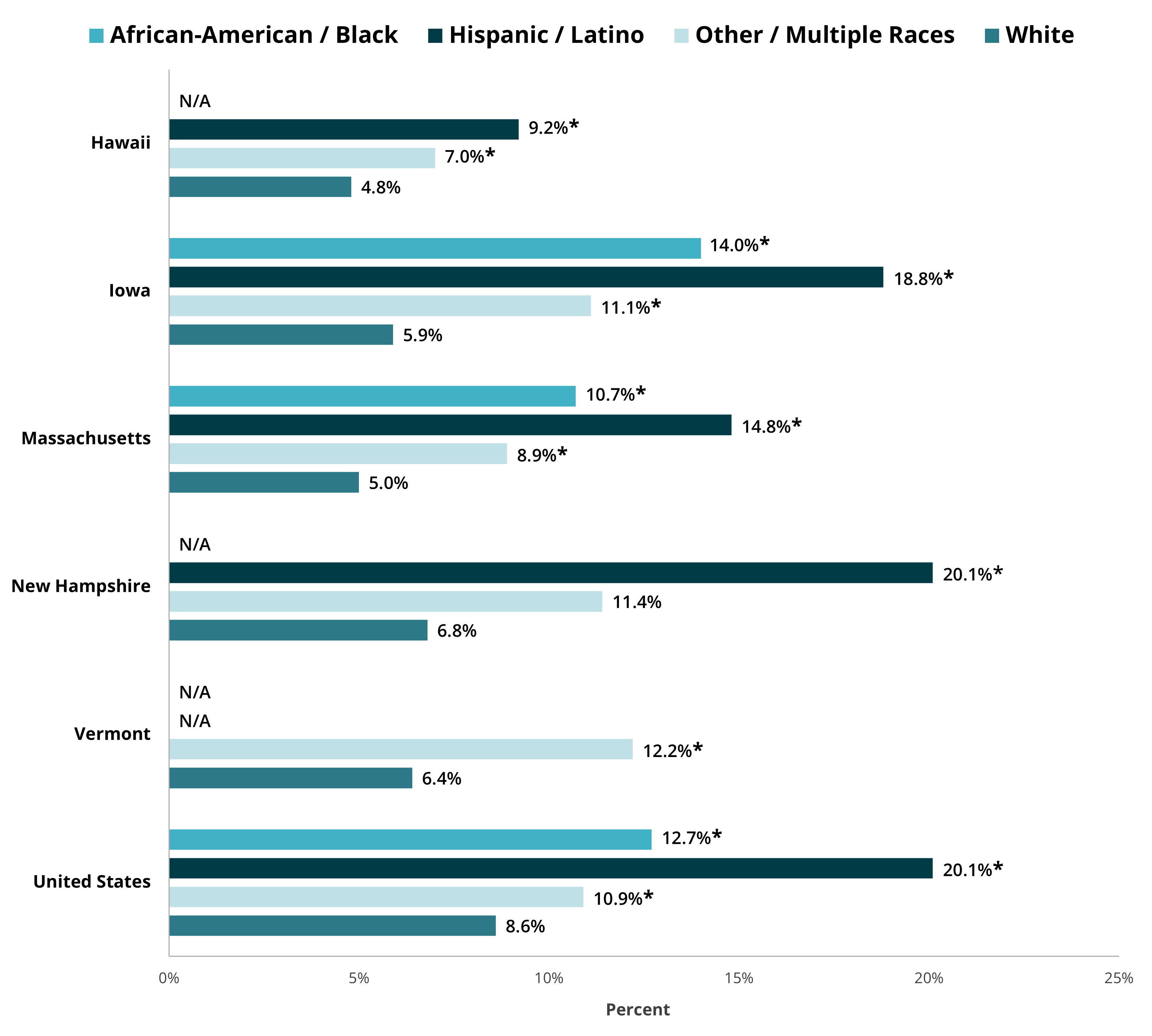Average number of days in the previous 30 days when a person indicates their activities are limited due to mental or physical health difficulties
Measure Overview
Generate customized graphics using this data by selecting one of the options below.
Related Products

Now Available on State Health Compare: Eleven Updated Measures and One Brand New Measure
Here is an overview of estimates for measures from a variety of categories (Health Outcomes, Health Behaviors, Access to Care, Cost of Care, and Social and Economic Factors, etc.) on SHADAC’s State Health Compare web tool. All measures contain data for 2018. State Health Compare has also added a brand new measure, Adult E-Cigarette Use. The post highlights the relevance and importance of each measure, as well as provides background information on the available breakdowns.

Exploring Racial Disparities in Forgone Health Care Using State Health Compare
In this blog post, we are going to explore racial disparities in forgone health care due to cost. Using SHADAC’s State Health Compare tool, we will examine forgone care data broken down by race and ethnicity. Then, we will explore racial disparities in forgone care at the state level.
